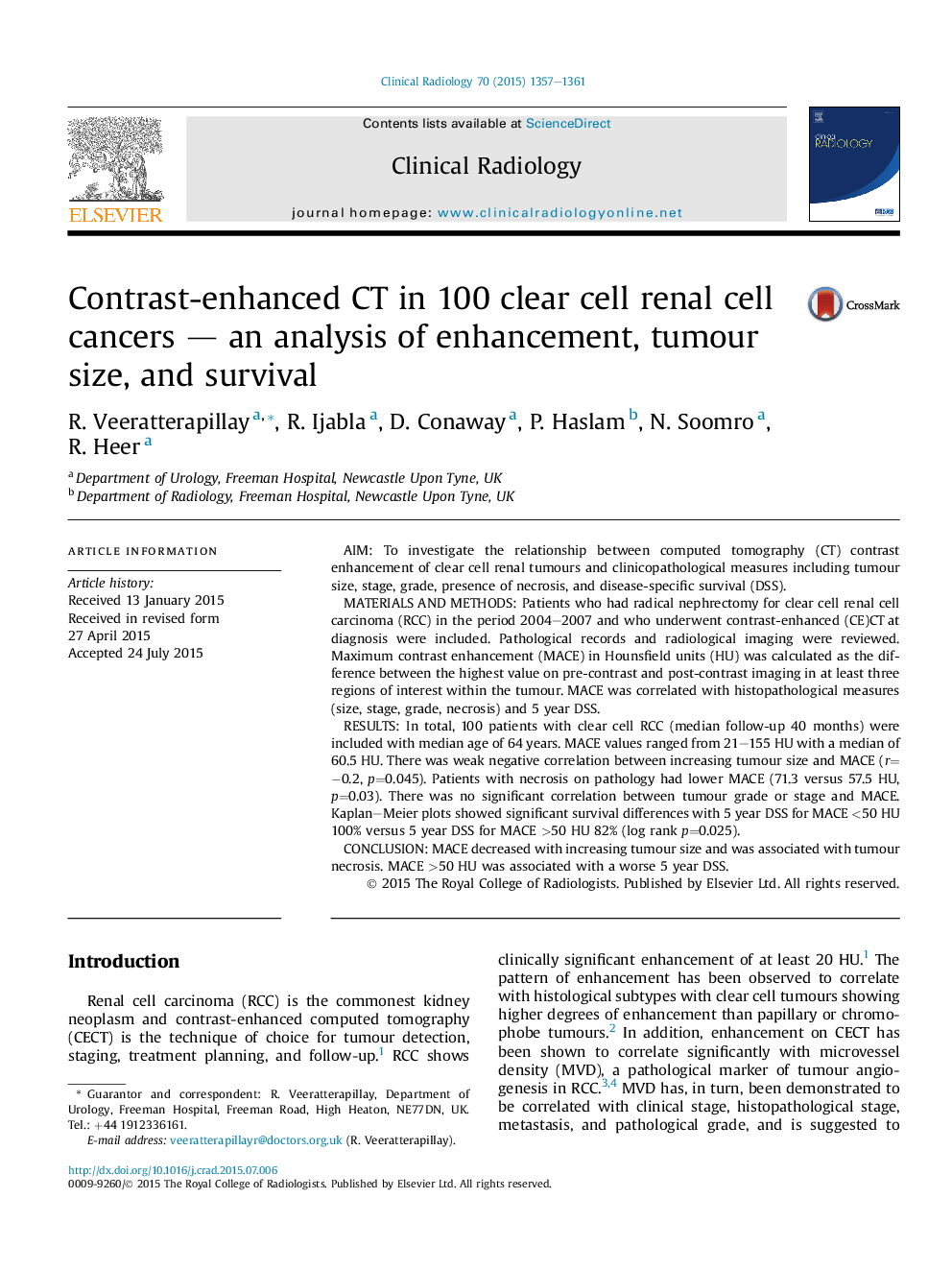| Article ID | Journal | Published Year | Pages | File Type |
|---|---|---|---|---|
| 3981352 | Clinical Radiology | 2015 | 5 Pages |
•Contrast enhancement on CT is key for diagnosing renal cell cancer.•Contrast enhancement in RCC is negatively correlated with tumour size.•Contrast enhancement can be a marker of survival in renal cancer patients.
AimTo investigate the relationship between computed tomography (CT) contrast enhancement of clear cell renal tumours and clinicopathological measures including tumour size, stage, grade, presence of necrosis, and disease-specific survival (DSS).Materials and methodsPatients who had radical nephrectomy for clear cell renal cell carcinoma (RCC) in the period 2004–2007 and who underwent contrast-enhanced (CE)CT at diagnosis were included. Pathological records and radiological imaging were reviewed. Maximum contrast enhancement (MACE) in Hounsfield units (HU) was calculated as the difference between the highest value on pre-contrast and post-contrast imaging in at least three regions of interest within the tumour. MACE was correlated with histopathological measures (size, stage, grade, necrosis) and 5 year DSS.ResultsIn total, 100 patients with clear cell RCC (median follow-up 40 months) were included with median age of 64 years. MACE values ranged from 21–155 HU with a median of 60.5 HU. There was weak negative correlation between increasing tumour size and MACE (r=−0.2, p=0.045). Patients with necrosis on pathology had lower MACE (71.3 versus 57.5 HU, p=0.03). There was no significant correlation between tumour grade or stage and MACE. Kaplan–Meier plots showed significant survival differences with 5 year DSS for MACE <50 HU 100% versus 5 year DSS for MACE >50 HU 82% (log rank p=0.025).ConclusionMACE decreased with increasing tumour size and was associated with tumour necrosis. MACE >50 HU was associated with a worse 5 year DSS.
